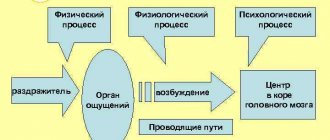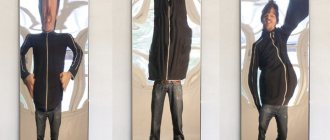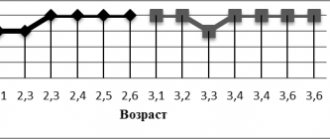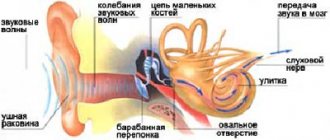Channels for perceiving information and working with them
Last time we talked about the different types of memory that a person uses to remember information. Today I propose to talk about the channels through which this information enters the brain. What are these channels? Why is it important to consider their work in the learning process? How to work with them when teaching a child? How to develop them?
It is known that people perceive information coming from the outside world differently. According to the method of perception, there are traditionally four personality types: visual, auditory, kinesthetic and discrete.
For visual learners, the main way of understanding the world is through vision. Such a person in his speech often uses words that are somehow related to vision (see, bright, light). He pays great attention to the color scheme of the objects around him: interior, clothing. A visual child usually has well-developed visual and figurative memory, often in combination with motor memory. Kids love to look at pictures and put together puzzles, and schoolchildren easily navigate diagrams, tables, and geographic maps; it is not difficult for them to work with a textbook on their own, and notebooks usually look neat. Girls pay a lot of attention to outfits and jewelry.
Auditory learners are those who receive information primarily through hearing. Their vocabulary often includes vocabulary related to auditory perception (sound, listen, quiet). Auditory children are usually very sociable, talkative, and easily remember what they heard and talked about, that is, they have a well-developed auditory memory. They often have a rich vocabulary and are good at convincing and persuading. They love to listen to music, but outdoor games are not very attractive to them.
Kinesthetic learners perceive information using other senses (touch, smell, taste), as well as with the participation of motor skills (motor activity). Their speech contains many words associated with sensations (soft, warm, sniff, grab). Kinesthetic children are usually very mobile, with well-developed motor skills, but it is difficult for them to maintain attention on any object for a long time. They are especially sensitive to touch, so they often need “calf tenderness” from significant adults: hugs, kisses. Comfortable clothes will be preferred to any outfit.
Discrete people are people who perceive information through logical comprehension. It is believed that this category of people is quite rare. Communication with the world through reflection and speech is established later than through vision and hearing; speech develops longer; moreover, in childhood, logical thinking is very weakly manifested. Therefore, in relation to children, the discrete category is not distinguished at all; traditionally they only talk about visual, auditory and kinesthetic learners.
Of course, no channel for perceiving information is the only one, we all use all channels, but one, as a rule, is dominant, and it is easy to identify simply by observing the child, his speech, how he relates to what sees, hears, feels. Why is it important to know what type of information perception prevails in your child?
Knowing who your child is - auditory, visual or kinesthetic, you can use this in teaching, you will be able to communicate with the child in his language, develop other channels of perception and thereby achieve the best perception of information and more successful learning as a result. It is important to consider that as the child grows and develops, the characteristics of perception change. So, all kids love to touch and taste everything. Among schoolchildren, as a rule, auditory and visual learners predominate, with much fewer kinesthetic learners.
In addition, one must keep in mind that these features of the child’s psyche - a way of understanding the world - manifest themselves in early childhood and become extremely important for the child’s interaction with the people around him, and with the surrounding reality in general. Thus, working with channels of perception becomes an important factor in the development and improvement of a child’s personality.
How to teach children with different ways of perceiving?
The school as a system does not take into account children’s individuality in this area either. It is assumed that the teaching methodology takes into account all three types of information perception, but in practice only two channels are used: visual and auditory; kinesthetic has almost no application, if you do not take into account labor and physical education lessons. Methods of presenting material are focused on children’s vision or hearing, with the expectation that at least part of it will stick in the students’ memory through one channel or another. The main information is written on the board, or students should see it on the textbook page, sometimes visual aids are used. Some of the material is voiced by the teacher, and often this voiced part predominates, especially in lessons, for example, history or literature. And if, say, the teacher himself is an auditory learner, then the visual channel in this case is used to a minimal extent and visual learners do not catch what they need. And kinesthetic learners often end up in the camp of C students: they are simply unable to perceive the necessary information in the required volume, presented in a form that is indigestible for them.
Thus, it again turns out that home schooling, individual work, is the best way to teach a child, taking into account all his personal characteristics and adapting to them. A schoolchild, as we see, is completely deprived of such luxury.
So, here's what you need to pay attention to when working with your child at home. During the learning process, visual learners are practically not distracted by extraneous sounds; auditory and kinesthetic learners, on the contrary, are easily distracted by any noise. It is generally difficult for kinesthetic learners to concentrate, they are easily distracted by anything, and in general this is the most problematic category of children in terms of learning. They require special attention, time and a carefully thought-out approach. So, for example, it makes sense to stay longer on the topic of the lesson, “chew” it thoroughly, play with it, give the child the opportunity to get used to it quickly, so that the return is the best.
Signs communicated to him in his “language” will help to attract and maintain the child’s attention during the lesson. A variety of gestures and facial expressions are good for visual learners. For auditory learners, intonation, voice timbre, louder-quieter variations, and pauses in speech are important. The clearer and more expressive the speech, the better the auditory learner will understand everything. Kinesthetics can be placed on the shoulder, on the arm; Taking him by the shoulders, turning him towards you, touching his hands will help to attract his attention.
A kinesthetic learner also has his own peculiarities of memorization: he remembers by moving, easily grasps the general, but has difficulty remembering details. This feature is not difficult to take into account in home schooling: it is enough to allow the child to behave freely in class, without forcing him into a rigid position “at the desk.” I was told about one such boy who listened to the explanations of his parent, sitting under the ceiling on the step of the wall bars.
The auditory one perfectly perceives and remembers what he hears, the visual one – what he sees. While working, it is convenient for a visual learner to have a piece of paper at hand on which he can draw and draw “scribbles” that help him think. Colored pencils will be very useful for him. The auditory student does not need to be pulled back when, while remembering, he whispers or mutters under his breath. Kinesthetic learners definitely need breaks from work and muscle relaxation. It is difficult for him to sit in one place for a long time, so lessons should be interrupted more often by warming up.
Different children have different ways to take a break from school. A visual person may prefer to change the type of activity: leaf through a book, watch a cartoon. The auditory learner will want to chat about abstract topics, the kinesthetic learner will want to move around.
Different personality types have their own characteristics that can be used to aid learning. For example, visual learners can be expected to quickly solve mathematical problems, auditory learners can quite accurately repeat information they just heard, and they easily memorize poetry. Kinesthetic learners, unfortunately, do not shine here; this is the type that requires more participation and time on the part of the teaching parent. Of course, it is important to take all these features into account not only in training, but also in everyday life, in everyday communication. It is important to use methods that are understandable and close to the child; this becomes a good assistant in establishing and developing interpersonal connections. When talking with a visual learner, you need to more often use words that describe color, shape, and size. For auditory learners, voice variations and vocabulary related to hearing are important; kinesthetics - gestures, touch, slow and clear speech.
And of course, it is definitely worth developing those channels of information perception that are not the main ones for your child. Visual and auditory learners should develop physical coordination and encourage all kinds of physical activity, which, in general, is relevant for all children. For the development of motor skills, all kinds of handicrafts and crafts made from materials of different textures are perfect, as well as household chores, everything that needs to be done with your own hands.
For the development of the visual channel of perception, various visual educational materials will be good - pictures, tables, drawings, well-illustrated additional literature, educational computer programs, and the like. It’s good to study ready-made materials together (saying their contents out loud) and create your own, the same tables and diagrams. Work more with color: highlight, for example, key points of the text with a colored marker. Such work, by the way, also helps to learn how to analyze and structure educational material, which contributes to the development of logical thinking. All sorts of games to develop mindfulness are also useful.
The development of the auditory canal is helped by reading aloud and detailed discussion of what has been read, all kinds of discussions on educational topics. It will be a good help to use audio materials, for example, when studying works of fiction or when studying a foreign language.
Thus, the more developmental work, the more channels gradually open and the more effective the learning process is, and not only learning, but also the child’s overall interaction with people and the world around him. And this, naturally, has a beneficial effect on the development of your child’s personality.
Yulia Zhabyko.
Visual sensory representational system
People with a dominant visual sensory representational system think in clear images and think primarily in “pictures,” as if watching a movie inside themselves. This system allows you to cover a large amount of information at once: internal images are holistic, appear instantly, constantly replacing each other. This is associated with a faster rate of speech and a higher pitch of voice. Such people are characterized by rich facial expressions and gestures, since with their help they “complete” what they are talking or thinking about. People with a dominant visual sensory representational system often pay attention to nuances of color and shape. Artists, architects, photographers, fashion designers, when creating clear, constructed mental pictures, often turn to the visual system. In life, such people are purposeful, organized, observant, and quite cautious. They are very neat, prefer everything to be in its place, and value cleanliness and order. When assessing any things or events, they like to step aside, looking “from head to toe.” They perceive information presented in the form of pictures, graphs, diagrams better than information expressed in words.
Auditory sensory representational system
People with a dominant auditory sensory representational system have the ability to make subtle auditory distinctions, to clearly hear a variety of tones and timbres of sounds. The rate of speech is average, so such people usually speak loudly and clearly, in a strictly maintained rhythm. Their voice tone is clear, expressive and resonant. People with a dominant auditory sensory representational system often pronounce, whisper to themselves what they just heard. The conversation or thinking process of such people may be accompanied by small rhythmic movements of the body, for example, tapping a foot to the beat of a conversation. When speaking, such people pay attention not only to the words, but also to how they are pronounced. They often turn their ear towards the interlocutor, as if listening to the tonality, timbre and rhythm of his voice. These people themselves are very talkative, love conversations, and always very clearly outline the course of events. It is best to perceive information by ear, remembering everything sequentially step by step. Sometimes such people seem slightly withdrawn, “detached,” as they often engage in internal dialogue—talking to themselves. They feel music very subtly and have a good sense of rhythm.
Digital representational system
Scientists identified this system of perception not so long ago. For a person with such a representative system, symbols - words and numbers - come first when perceiving the world around them. Their type of perception is aimed at logical justification of everything that happens around them. Digitals are excellent strategists. They are excellent at planning and handling details. Solving complex problems is their strong point. Information is processed and remembered step by step, sequentially, methodically, logically, putting everything on the shelves. They need a certain amount of time to process information. Therefore, new ideas, situations, people are not immediately perceived. They need time to think and comprehend.
Kinesthetic sensory representational system
People with a leading kinesthetic sensory representational system base their actions mostly on their feelings; they need to feel, “try on” the situation before making one decision or another. With the help of this system, a person turns to his own inner feelings and states. In order to “live”, it takes more time to feel a situation than, for example, to imagine it (visual system), therefore the pace of speech in people with a leading kinesthetic sensory representational system is slower, with long pauses. The tone of voice is low, quiet, deep. During a conversation, these people make very few movements, and the gestures they use are smooth, measured and impressive. They like to get closer to their interlocutor and communicate by touching him. These people are good storytellers, because during the story they show with their whole body what they are talking about. These people are very emotional, vulnerable, and take everything to heart. In life, such people strive for comfort and coziness. They, first of all, care about what they feel comfortable. They sense space very well. To better perceive information, they need to touch, feel, take apart, taste, feel.









